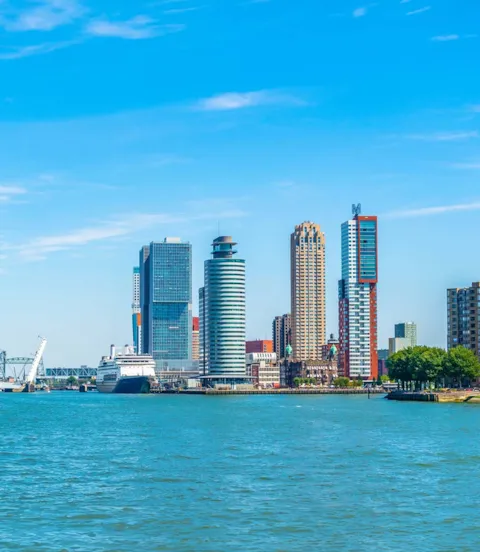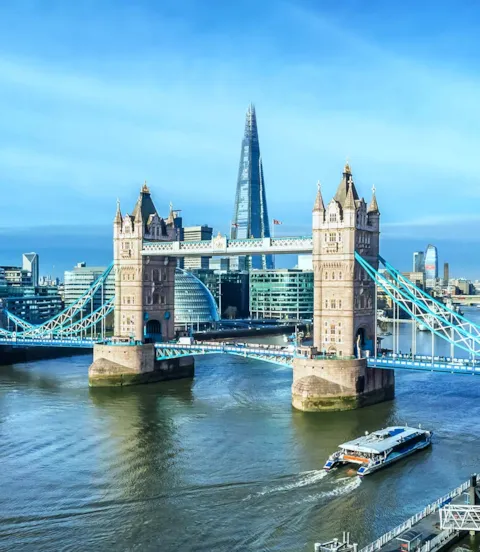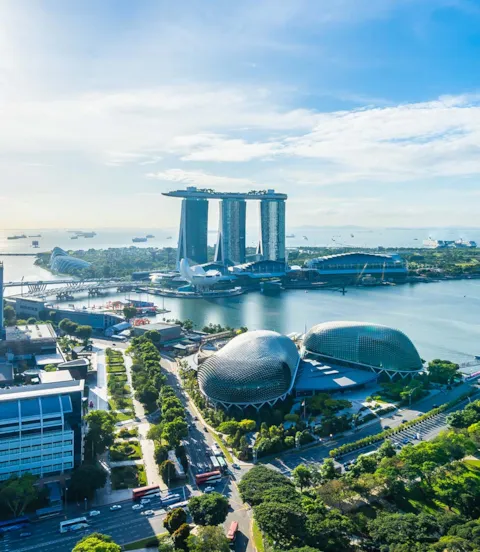Leading maritime cities driving decarbonization of shipping
The Leading Maritime Cities report shines a light on the key cities driving the maritime industry forward. With decarbonization and digitalization key factors in today’s maritime world, the report’s co-author explains how these are being advanced by activities in the leading maritime cities.
The latest edition of the Leading Maritime Cities (LMC) report was published in April this year. The collaboration between DNV and Menon Economics delivers fresh insights into the maritime cities which offer the best policy measures, infrastructure and supporting institutions, and how these are driving advancements in the maritime industry.
Leading maritime cities in a world of transition
The LMC report recognizes the central importance that decarbonization and digitalization occupy within shipping. The impact of these two dimensions cuts across the traditional pillars that cities are benchmarked on. To address their transformative effect, this year’s report introduces new indicators – such as capabilities in the adoption of digital technologies and automated processes for port operations, and proactivity in implementing green and sustainable financing practices.
“The maritime industry is in the midst of a major transformation,” says Dr Shahrin Osman, Business Development Director, DNV Maritime Advisory and co-author of the report. “Decarbonization targets mean that the entire industry is looking at how it can undergo a transformation of technologies and fuels to reduce emissions, all of this being supported by advances in digitalization.”
Singapore dominates rankings with strong decarbonization efforts
“Maritime cities are the centres of gravity driving this forward. This is where the leading companies and talents are residing and where the real transformations are taking place. They provide platforms for progress and serve as conduits, linking the industry with the wider global economy.”
Like in the previous edition of this report in 2022, a combination of objective and subjective indicators are used to rank the different cities. Singapore was once again recognized as the leading maritime city, followed by Rotterdam and London, with Shanghai and Oslo making up the remainder of the top five. The Asian city-state hit the top spot in three out of the report’s five pillars, retaining its position as leader in Attractiveness and Competitiveness and overtaking Athens and Shanghai in Shipping Centres and Ports and Logistics. Much of this is due to Singapore’s strong positioning towards decarbonization.
The Silicon Valley of the maritime industry
“Driven by key bodies like the Maritime and Port Authority of Singapore and the Global Centre for Maritime Decarbonization, Singapore has a forward-leaning, future-ready approach. They look at things not just for the next few years, but for the next decade,” says Shahrin. “This includes policies towards building up a multi-fuel infrastructure, the electrification of harbour craft, and the promotion of green shipping corridors.”
“Overall, this has made Singapore an attractive location for shipping businesses, to the point where we now regard it as the Silicon Valley of the maritime industry.”

Government policies driving the green transition in key cities
As the example of Singapore has shown, strong, progressive government policy is one of the key factors behind the evolution of maritime cities, underpinning a forward-leading approach. This can attract companies and top talent to a city, while creating a competitive economic environment with well-developed infrastructure can encourage these actors to stay.
“This is especially relevant for decarbonization initiatives, where returns on investments take longer, and are dependent on wider infrastructure being in place,” says Shahrin. “Government support mechanisms can be crucial in facilitating innovation, so that new products and solutions can be developed.”
Shahrin points to the Norwegian Green Shipping Programme as a prime example of good government policy in action. This brings together public and private actors to overcome key decarbonization barriers, supported by funding from the Norwegian parliament.

Attraction of talent to cities key to progress
Central to the attractiveness and competitiveness of a maritime city is its ability to attract and retain top talent. The presence of research and educational institutions can help to develop talent within that location. The availability of professional opportunities and general high standards of living will encourage leading talents to relocate.
“Achieving technological progress is dependent on aggregating available knowledge that could otherwise be located in silos, and bringing it all together in clusters,” says Shahrin.

Maritime cities driving R&D initiatives
With enough talent in place, conditions are ripe for R&D, a central part of the Maritime Technology pillar, which this year was topped by Busan, followed by Singapore and Oslo. One of the objective indicators in this pillar is the number of maritime patents owned by companies in each city, shining a light on the success of R&D initiatives. These are more important than ever as the industry searches for the best ways to decarbonize.
“This is particularly challenging for shipping, where in each vessel there are so many systems and components,” says Shahrin. “The growing importance of digitalization amplifies this, and it is now vital to bring data analysts, AI experts and programmers together with traditional shipping innovators so that more walls can be broken down and solutions found even faster.”

Making ports future-ready
With moves to decarbonize the industry underway, ports will be key cornerstones in facilitating a green transition. This means developing bunkering infrastructure and being ready to supply a range of alternative fuels in the future, providing shore power, and building up supporting structures so that these can be delivered in a safe manner by well-trained personnel.
“It is the responsibility of the cities to ensure that they have reliable processes and procedures in place, so that when the time comes to deliver a bunkering system for alternative fuels the risk element is low,” says Shahrin.

Digitalization serving port decarbonization
Advances in digitalization by ports will also be crucial in serving the wider decarbonization of shipping. Smart ports are leveraging digital technologies to optimize cargo-handling processes, streamline logistics operations, and enhance security measures. However, different cities have varying levels of digital capability, meaning some are better positioned to deliver this than others.
“From a decarbonization perspective, port digitalization is very important in promoting ‘just-in-time’ operational efficiencies, which requires ports to be able to communicate exact berthing times with vessels,” says Shahrin. “Once a system like this is in place, it will facilitate speed optimization, which can help to reduce emissions even further.”

The role of financial institutions in maritime decarbonization
As with previous editions, Maritime Finance and Law is a key pillar in the LMC report, highlighting the importance of banks and other financial institutions, backed up by a mature legal system, in the maritime value chain. This is even more important in the age of decarbonization, where companies are reliant on capital to embark on green initiatives.
In this year’s report, London regained its position as the top-ranked city in this pillar from New York, backed up by the presence of global leaders in banking and insurance, as well as the fact that English law is the most widely used in maritime disputes.
“Leading cities like London have financial and legal institutions and experts who are mature and have a deep understanding of the maritime industry,” says Shahrin. “This helps them to structure transactions in a way that recognizes the needs of maritime players, ultimately serving to push everyone in the same direction and towards our greater goals.”

Singapore expected to hold on to top spot
Singapore is expected to retain its position as the leading maritime city for the next five years at least. Shanghai will likely grow in importance and is expected to take second spot in the near future, with Dubai also on the way up and likely to enter the top five over the next five years.
“Over half of the global population live in cities and the urban population is set to double by 2050, reinforcing their importance to the maritime industry,” says Shahrin. “Cities will continue to promote connectivity, provide high-value added services, and enable innovation, and are therefore vital to the future success of shipping.”
Dr Shahrin Osman
Business Development Director, DNV Maritime Advisory
- Shutterstock / Lifestyle Travel Photo
- Shutterstock / Lifestyle Travel Photo, Shutterstock / trabantos, Shutterstock / Alexey Fedorenko, Shutterstock / saiko3p, Shutterstock / dongfang
- Shutterstock / trabantos
- Shutterstock / Alexey Fedorenko
- DNV & Menon Economics
